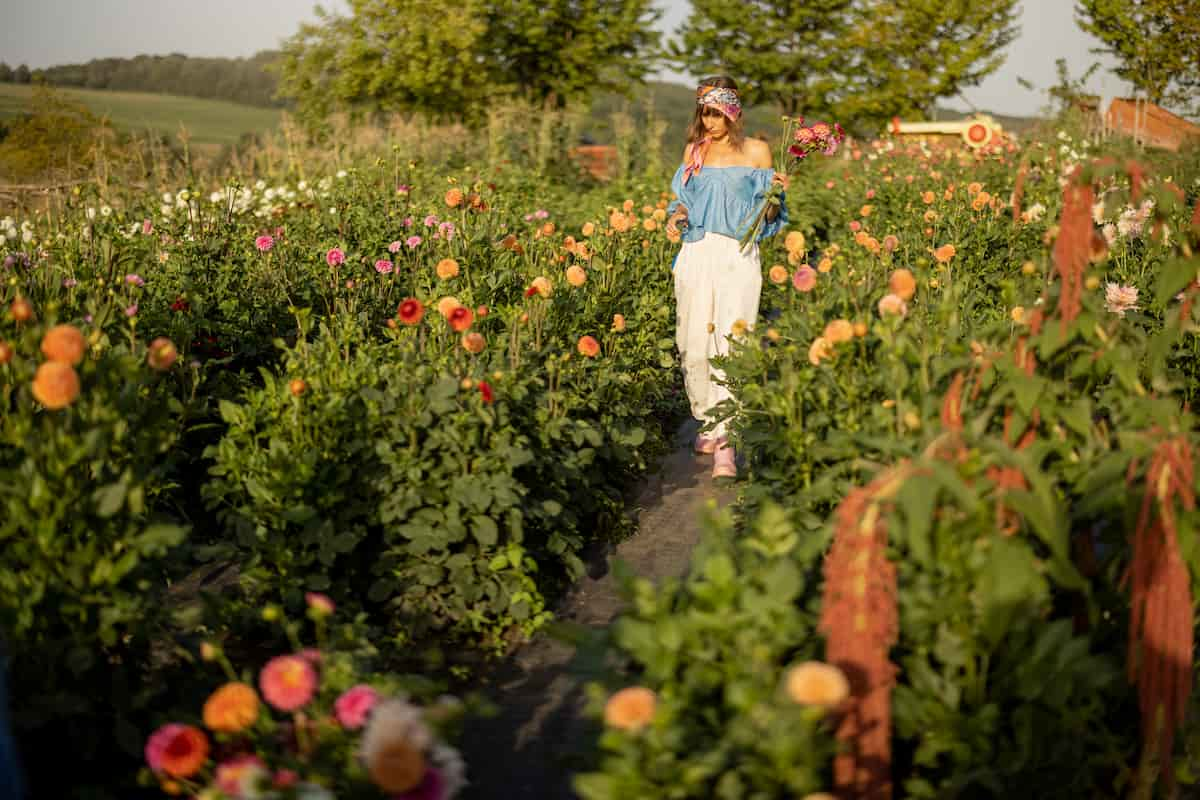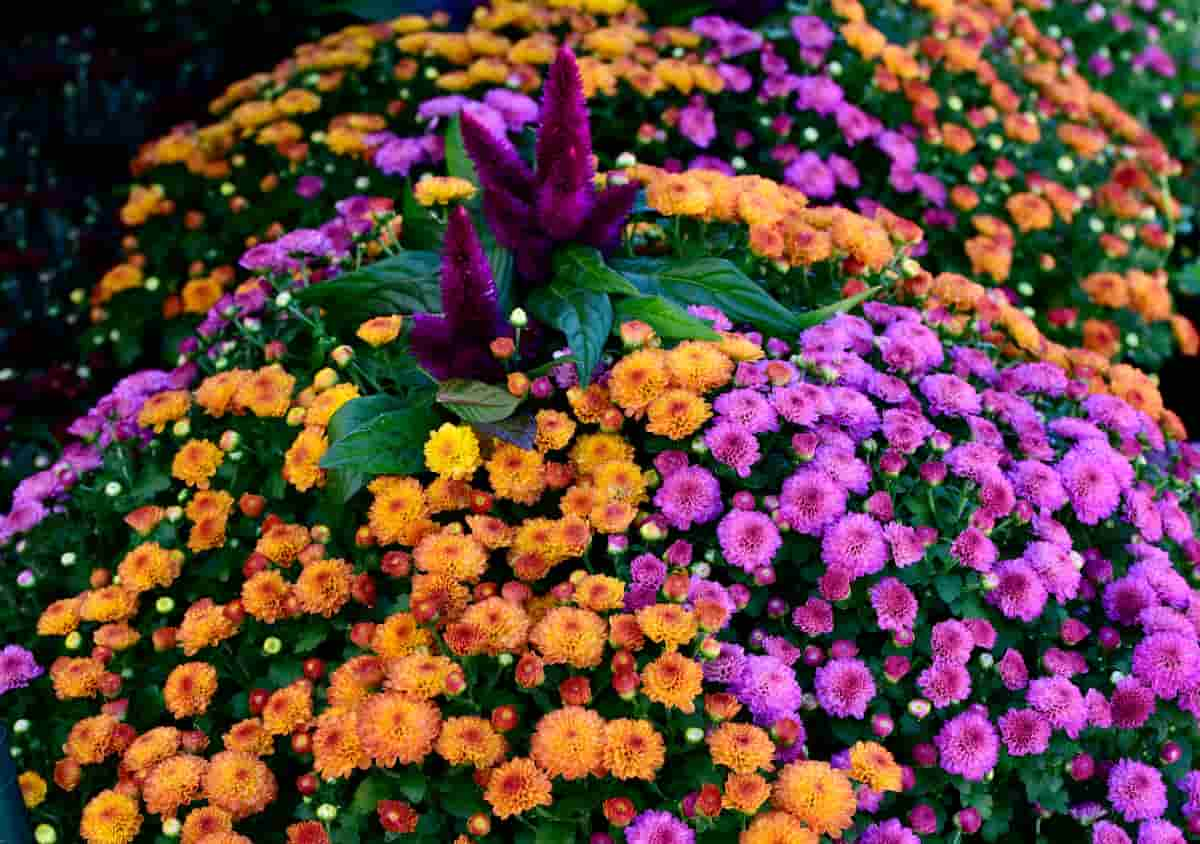Floriculture, or “flower farming,” refers to growing flowers for sale, usually to make bouquets or arrangements to give as gifts or decorative accents in homes. The rising demand for flowers in areas such as weddings, events, and gift stores has contributed significantly to the industry’s rapid expansion in recent years. The entry barrier to flower farming is low, the costs to keep things going are low, and the work atmosphere is pleasant, making it a potentially lucrative business for beginners.

How to Start Flower Farming from Scratch
Benefits of Flower Farming
- Flower farming offers several benefits, including environmental sustainability, economic growth, and personal fulfillment. First, flower cultivation is a sustainable industry that does not require harmful chemicals and can help improve the soil’s and surrounding ecosystems’ health.
- Second, it can contribute to economic development by creating employment opportunities, bolstering local economies, and generating income by selling flowers.
- Lastly, flower farming can be a fulfilling profession for individuals who enjoy working with plants and nature and can provide a sense of satisfaction by creating beautiful and colorful landscapes.
Factors to Consider Before Starting Flower Farming by Beginners
- Location: Consider the farm’s location as it can affect the availability of resources like water and sunlight and the accessibility to the market.
- Market Demand: Research and analyze the demand for flowers in your area to identify the types in demand.
- Type of Flowers: Decide on the type of flowers to grow based on the market demand, growing conditions, and personal preference.
- Land: Ensure that the land chosen is suitable for flower farming by conducting soil tests, checking for drainage, and accessibility to water.
- Resources: Identify the resources required, such as tools, equipment, and labor, and ensure they are available.
- Budget: Develop a realistic budget that includes costs for land preparation, seed or plant sourcing, and marketing.
- Regulations: Check for any regulations or permits required for flower farming in your area.
Research and Planning for Flower Farming for Beginners from Scratch
- Research flower types: Find popular flowers that grow well in your region, and fit your budget. Choose blooms based on soil and water conditions.
- Flower market demand: Research local flower needs. Identify the target market and their tastes to grow the most profitable and in-demand flowers.
- Find Flower Farming Land: Choose a floral farm site based on soil, drainage, water, and sunlight. Make sure the soil can grow your flowers.
- Selecting a flower growing method: consider soil quality, water supply, and climate when choosing a farming method. Consider greenhouse, hydroponic, and open farming.
- Budgeting: Create a comprehensive budget for starting and running a floral farm. Land preparation, seed/plant sourcing, labor, marketing, and other fees should be included. Avoid money issues by creating a realistic budget.
Land Preparation and Soil Management for Flower Farming for Beginners from Scratch
- Land clearing and planting: Remove rocks, debris, and other barriers before planting. Level the land for drainage and water control.
- Soil testing: Test soil nutrients and pH. This will reveal any deficits or imbalances before planting.
- Soil amendments and fertilization: Based on soil test results, amend and fertilize soil to enhance quality and provide nutrients for plant growth: lime, nitrogen, phosphorus, potassium, and organic stuff.
- Drainage and irrigation management: Healthy plant growth requires proper drainage and watering. Install irrigation devices to water plants and grade the land to allow water flow.
- Pest and disease management: Prevent or treat plant-damaging pests and diseases. This may include using natural or chemical pesticides and fungicides, routine plant inspections, and good hygiene and sanitation.
In case you missed it: Garden Soil Preparation: For Vegetables, Fruits, Flowers, and Herbs

Flower Planting and Care for Flower Farming for Beginners from Scratch
- Selecting the ideal flower varieties for planting: Choose flower varieties that are in demand, appropriate for your growing conditions, and align with your business objectives. Consider the flowers’ color, size, scent, and receptacle life.
- Seed sourcing and propagation: Sourcing high-quality seeds from reputable vendors and propagating plants from cuttings or divisions. Ensure that the plants are disease-free and robust. Choose between transplanting seedlings or sowing seeds directly into the soil. This is dependent on the type of plant and its development conditions.
- Watering and fertilization: Regularly provide sufficient water and fertilizer to encourage healthy plant growth and maximize yield. Observing soil moisture and nutrient levels ensures that plants are well-rested and fertilized.
- Pruning, deadheading, and weed control: Prune plants to encourage branching and remove damaged or diseased parts. Remove spent blossoms to encourage new growth. To prevent competition for nutrients and space, eradicate vegetation.
- Techniques for flower harvesting: Harvest flowers at the appropriate stage of maturity, early in the morning or late at night, when they are hydrated and colder. Utilize clean, sharp instruments to prevent plant damage and maximize the vase life of cut flowers.
Marketing and Sales for Flower Farming for Beginners
- Market research: Find florists, event managers, wholesalers, and individual buyers. Tailor your products and marketing to their wants, preferences, and buying habits.
- Establishing partnerships with florists and other retailers: Form partnerships with florists, supermarkets, and other merchants to sell your flowers. To entice customers, offer discounts, deals, and delivery.
- Setting up an online presence: Create a website or social media pages to promote your flowers and company. Attract online consumers with SEO and social media. Participate in local farmer’s markets, festivals, and other events to sell your flowers directly to customers. This lets you connect with customers and get product input.
- Setting competitive rates: Research market rates for your flower varieties and set prices that give value to customers while covering production costs. Incentivize repeat companies with volume discounts.
The USDA reports that the U.S. cut flower business generates $7.5 billion annually due to rising demand for locally grown flowers. Growers can enter this market by partnering with florists and other stores. By 2023, online flower sales will hit $4.1 billion. Finally, farmer’s markets and other events can boost growers’ image and customer loyalty.
In case you missed it: Garden Layout Ideas for Indoors and Outdoors: For Flowers, Vegetables, Herbs, and Fruits

Conclusion
It is possible to make an affordable living by starting your flower farm from the beginning. Beginners can find commercial success with a flower farm by focusing on a few key areas: market demand; suitable land; growing methods; and marketing. A flower garden can blossom into a prosperous enterprise with care, effort, and preparation.
- Ultimate Guide to Ossabaw Island Hog: Breeding, Raising, Diet, and Care
- Ultimate Guide to Juliana Pig: Raising Facts, Size, Diet, Care, and Lifespan
- Raising Lleyn Sheep: Disadvantages, Price, Uses, Characteristics, and Care
- Ultimate Guide to Meishan Pig: Breed Facts, Breeding, Raising, and Care
- Ultimate Guide to Teacup Pigs: Raising, Diet, Lifespan, Cost, and Care
- Guide to Raising Poll Dorset Sheep: Facts, Profile, Characteristics, Uses, and Care
- Ultimate Guide to Bighorn Sheep: Characteristics, Diet, Lifespan, Breeding, and Lifecycle
- Ultimate Guide to Raising Katahdin Sheep: Farming Facts, Breed Profile, Uses, and Care
- Ultimate Guide to Raising Oreo Cows: Belted Galloways Farming Facts, Profile, Uses, and Care